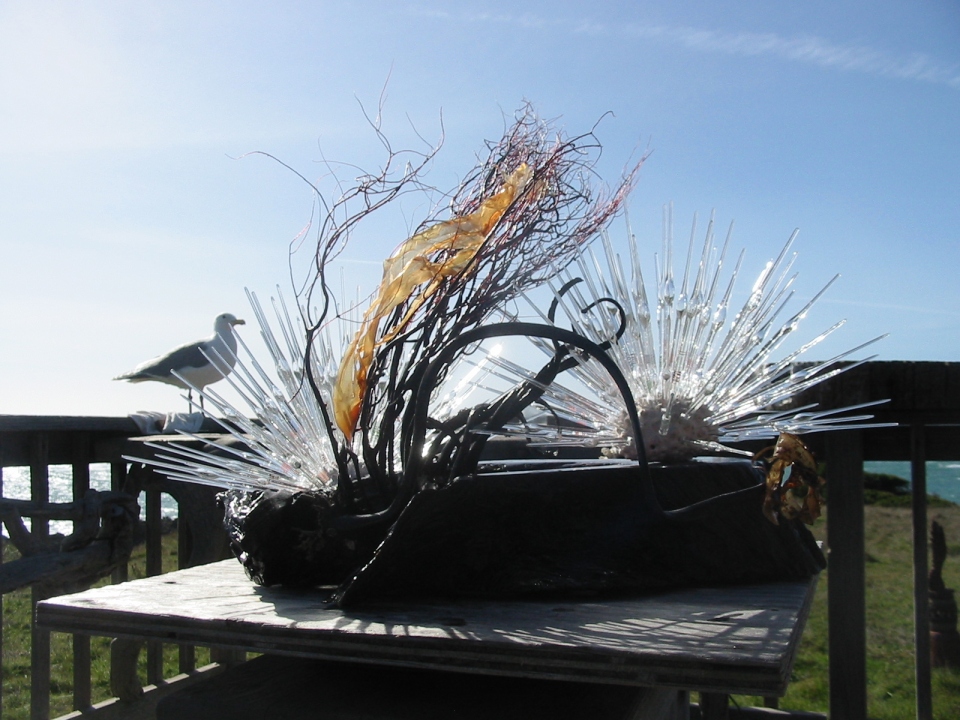When the UCLA School of Medicine was in its infancy in the 1950s, its first National Institutes of Health research grant established the UCLA Hematology Research Laboratory directed by William N. Valentine, M.D. His first cadre of research technologists was comprised of several unique individuals with eclectic credentials that included Marylu Mattson. Their studies of blood cell metabolism in health and disease were eventually responsible for identifying over half of the enzyme deficiency states now known to cause hereditary and acquired forms of hemolytic anemia in humans and animals. This not only established an international reputation for the Laboratory but led to Dr. Valentine’s election to the National Academy of Sciences and his nomination for a Lasker Medical Science Award, the so-called “pre-Nobel”.
Lu’s simultaneous pursuit of a doctoral degree in English literature did not deter her from mastering the arcane language of enzyme biochemistry, and she was equally meticulous and insightful at the laboratory bench as she was in the literature archives of academe. She developed into a highly sophisticated experimentalist who contributed far more than technical expertise. Lu’s work was instrumental in identifying and characterizing the first kindreds afflicted with pyruvate kinase deficiency, worldwide the second most common hereditary enzyme defect associated with hemolytic anemia.
Her ability to work creatively in such disparate fields set her apart and reflected her wide-ranging curiosity and intellectual capacities. Her interest and accomplishments in multiple fine arts media were a similar reflection of her multifaceted intelligence, and she even became a periodic resident of the art colony at San Miguel de Allende in Mexico. More recently, even in retirement, she was actively mediating the early stages of a potential academic affiliation between the Mendocino Art Center and the Art Department of her beloved Sonoma State University.
Those of us who had the great good fortune to love her as friend and work with her as esteemed colleague will perhaps most fondly remember her engaging unpretentious nature, her quick wit and subtle sense of humor, and her remarkable equanimity, even when working under arduous circumstances. It is particularly devastating to lose her after so recently reuniting.
I especially missed Lu this week as I installed a sculpture for the Marine Wildlife Invitational Exhibition at the Mendocino Art Center where I rendezvoused with her and Linda last year. This was the first piece I had completed utilizing many of our old lab’s micropipettes that became obsolete with the advent of disposable plastic alternatives. Their inherent beauty, as well as the historical connection, always prevented me from discarding them. I have asked the Art Center to cite it in dedication to Lu’s memory.
Donald E. Paglia, M.D., Principal Investigator, UCLA Hematology Research Laboratory, UCLA School of Medicine.


The Hematology Research Lab at UCLA was housed in a funky modular building on the grounds of the VA hospital next to UCLA. The entrance was a screen door, and the occasional skunk had to be removed by a special squad of trouble-shooters. I hung around a bit during the year I worked at a company developing a new product called software and Lu completed her M.A. at UCLA and continued working in the lab. It was a stimulating set of people. There was Klaus, who worked in the lab by day and as a bartender at night, saving to buy a ski lodge in his native Kitzbuhel; he did, and Lu visited him during one of her trips to Europe in the 70s. Another Mary Lou, aka “the Wilson,” was partner of Hallie Bundy, esteemed chemistry professor at MSMC; both were Lu’s close friends. There were the foreign exchange doctors Koutras from Greece, and “Mabo” Hattori from Japan who accompanied Lu and me to our first Obon festival. And of course, Julie. Eric and Julie Wittenberg were holocaust survivors, who fled Prague and eventually found their way to a modest house in west Los Angeles. Cultivated, gentle and hospitable, they were mentors to me as well as Lu. I remember dinner parties filled with illuminating conversation, and a few evenings listening as they worked patiently with Lu on her German in preparation for the M.A. foreign language exam. After Eric’s death Lu made several trips to California to see that Julie was taken care of. I visited Julie shortly before she died, and she talked of her great affection for Lu who was, she said, “like the daughter I never had.” It strikes me now, writing this, that I was very much the sister that Lu never had, and while I have plenty of younger sisters Lu was a big sister to me. She took me camping (including one time when we forgot a tent and made do with a very transparent sheet of plastic), she showed me how to balance a checkbook, she introduced me to my dentist, she initiated me into the arcana of graduate study.
Helen Jaskoski